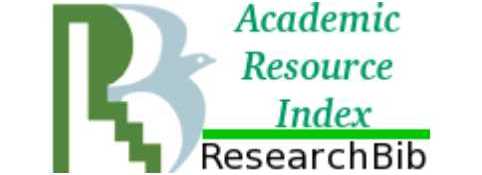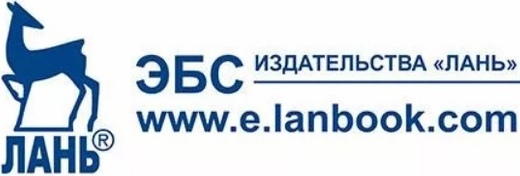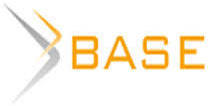RESEARCH OF COMMUNICATIVE ASPECTS OF COHESION: THEORETICAL AND METHODOLOGICAL FOUNDATIONS AND THE RESULTS OF THE BASIC RESEARCH
The article provides the main theoretical and methodological approaches to the study of group cohesion/ disunion. The cohesion is understood as quality of a condition of a collective subject (communities, groups). The high level of cohesion is characterized by the existence of group ideology. The dynamics of group identity is closely bound with self-development of certain individuals. An increase of individual consciousness generally leads to decrease of unity, manifestation of disunion in the social field of the group. The author sees the problem is in a high level of group cohesion aimed to destruction of public system, separate social institutes or other communities will have a destructive nature just as a high level of group disunion, in the extreme manifestations, destroying communicative relations, structure of social interactions, leading to atomization and chaos therefore it is necessary to understand where there is "golden ratio", a facet of a such cohesion that on the one hand, it would has a constructive nature, and on the other hand promotes an effective realization of innovative and modernization processes. The article presents the grounds for classification of the groups, describes the communicative barriers (faults, barriers, gaps), promoting group disunion. The author represents a technique of the communicative analysis of cohesion aspects expressed in communicative practice at forums in the Internet developed and tested during the basic research.


















While nobody left any comments to this publication.
You can be first.
Alekseeva-Beskina, T. I. (2014), Sotsiogenom iskusstvennoy sredyi obitaniya [Sociogram artificial habitat], "Kanon+", ROOI "Reabilitacia", Moscow, Russia, 456. (In Russian).
2. Dyurkgeym, E. (1996), O razdelenii obschestvennogo truda [About the division of social work], Translated by Gofman, A. B., Kanon, Moscow, Russia. (In Russian).
3. Castells, M. T. (2000), Informatsionnaya epoha: ekonomika, obschestvo i kultura [Information age: economy, society and culture], Translated by Shkaratan, O. I., SU HSE, Moscow, Russia. (In Russian).
4. Levin, K. (2000), Teoriya polya v sotsialnyih naukah [The theory of the field in social sciences], Translated by. Surpina, E., Rech’, Saint-Petersburg, Russia. (In Russian).
5. Mannheim, K. (2000), Izbrannoe: Sociologija kul'tury [Favourites: Culture sociology], Universitetskaja kniga, Moscow, Russia, [Online], available at: http://filosof.historic.ru/books/item/f00/s00/z0000766/st002.shtml (Accessed 12 October 2017). (In Russian).
6. Moreno, J. L. (2001), Sotsialnyie dvizheniya: teoriya, praktika, perspektiva [Sociometry, experimental method and the science of society], Translated by Bokovikova, A., in Zolotovitski, R. (ed.), Akademicheskiy Proekt, Moscow, Russia. (In Russian).
7. Moskovichi, S. (1998), Mashina, tvoryaschaya bogov [The machine that creates the gods], Translated by Center of psychology and, Moscow, Russia. (In Russian).
8. Pashchenko, V. V. (2014), “Problem of measurements of social space of management in sociology”, Modernizatsiya otechestvennoy sistemyi upravleniya: analiz tendentsiy i prognoz razvitiya [Modernization of a domestic control system: analysis of tendencies and forecast of development], Proc. of the all-Russian scientific and practical conference XII-XIIth of Dridzevsky readings (21-22 November 2013) in Tikhonov, A. V. (ed.), Institute of Sociology RAS, Moscow, Russia, 249-256. (In Russian).
9. Pashchenko, V. V. (2015), “The stage of group cohesion” in Tikhonov, A. V. (ed.), Sociologija upravlenija: Teoretiko-prikladnoj slovar' [Sociology of management: Theoretical and applied dictionary], KRASANDR, Moscow, Russia. (In Russian).
10. Sotsiologicheskaya entsiklopediya: V 2 t. [Sociological encyclopedia: In 2 v.] (2003), National public and scientific fund, Leader of the scientific project Semigin, G. U.; Editor-in-chief Ivanov, V. N., Vol. 2, Mysl', Moscow, Russia. (In Russian).
11. Shilova, V. A. (2014), “Dictionary and experience of research in the communicative space management” in Tikhonov, A.V. (ed.), Sociology of management: fundamental and applied knowledge, "Kanon+", ROOI "Reabilitacia", Moscow, Russia, 225-243. (In Russian).
12. Yadov, V. A. (2013), Samoregulyatsiya i prognozirovanie sotsialnogo povedeniya lichnosti: Dispozitsionnaya kontseptsiya [Self-regulation and prediction of the social behavior of the individual: Dispositional concept], 2-nd extended edition, TsSPiM, Moscow, Russia, 376. (In Russian).
13. Yanitsky, O. N. (2013), Social movements: theory, practice, perspective, Novyy khronograf, Moscow, Russia. (In Russian).
14. Festinger, L., Carlsmith, J. M. (1959), “Cognitive consequences of forced compliance”, Journal of Abnormal and Social Psychology, 58, 203-210.
15. Newcomb, T. M. (1953), “An approach to the study of communicative acts”, Psychological Review, 60, 393-404. (InRussian).